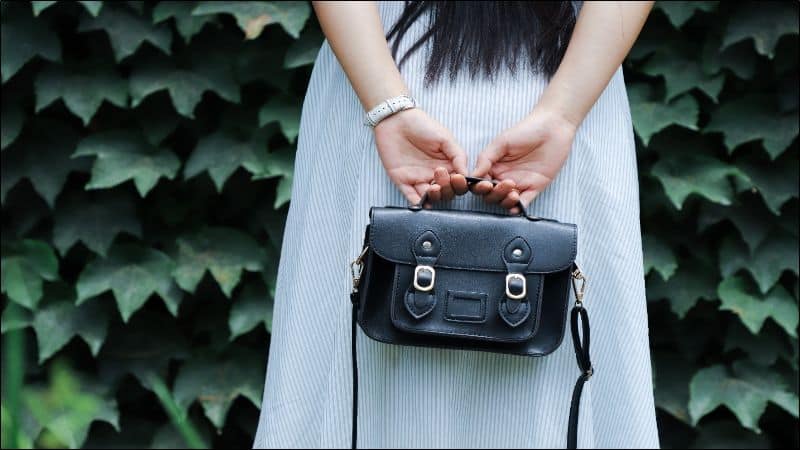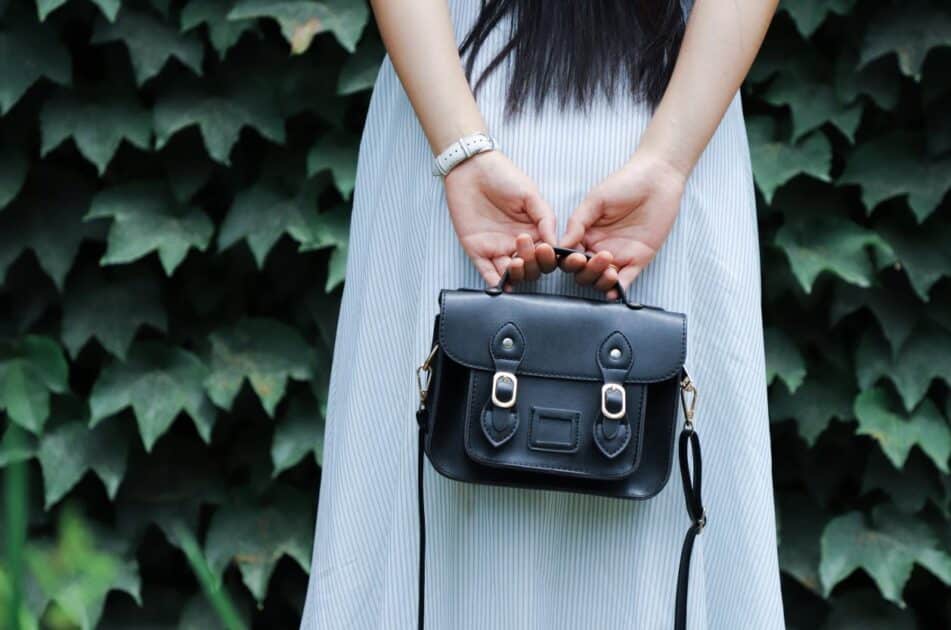You’ve splurged on that dream handbag and it’s finally in your hands. But how do you keep the shiny bits – the hardware – from losing their luster? The buckles, clasps, and metallic logos are the first to show wear, and let’s face it, they can make or break your bag’s look.
Why protecting handbag hardware is important
Whether you’re a handbag aficionado or an occasional user, safeguarding your bag’s metallic parts is crucial. These hardware elements—buckles, clasps, and logos—are not just decorative; they’re the unsung heroes of your bag’s functionality and aesthetic. Without them, your treasured accessory wouldn’t be the same.
Handbag hardware is susceptible to wear and tear. Daily use exposes these parts to elements that can cause tarnishing, scratching, and even chipping. These signs of damage are often more noticeable on hardware than on the material of the bag itself. The contrast between well-preserved leather and tarnished metal can be stark.
In the fashion industry, maintaining a pristine appearance is paramount. It’s widely known that the allure of a high-quality handbag lies as much in its gleaming accents as in its craftsmanship. The hardware on your bag acts as a focal point, drawing eyes and often serving as a brand identifier. When you keep these elements in top condition, you’re preserving your bag’s value—both monetary and sentimental.
Let’s face it, a luxury handbag is an investment. The last thing you’d want is for its value to decrease due to neglected hardware. The resale market for designer handbags is booming, and potential buyers scrutinize every detail. Impeccable hardware sets your bag apart and can significantly boost its resale value.
Here are some practical impacts of well-maintained handbag hardware:
- Enhanced longevity: Hardware in good condition keeps bags functioning properly for longer.
- Visual appeal: Shiny, unscratched hardware elevates a bag’s design, keeping it in vogue.
- Brand representation: Designer logos and unique clasps represent the brand’s image; keeping them intact ensures the brand’s prestige reflects on you.
Clearly, the fittings on your handbag demand as much care and attention as the leather and fabric it’s crafted from. It’s not just about aesthetics—it’s about preserving the integrity and essence of your beloved accessory. So, next time you reach for your favorite handbag, give its hardware the same consideration and care you’d give the rest of the bag.
Understanding the different types of hardware on handbags
As you dive deeper into handbag care, it’s crucial to recognize the variety of hardware that could adorn your bag. Handbag hardware goes beyond mere embellishment; it serves as the backbone of your accessory’s design and functionality.
Fasteners are the lions of handbag hardware, robustly securing your belongings. You’ll encounter zippers, magnetic snaps, and turn locks, each with a distinct mechanism and aesthetic. Notably, zippers come in metal or plastic, with metal being more durable but also more susceptible to tarnishing.
Buckles and sliders adjust straps to your comfort, allowing personalization in fit. Buckles often bear the brunt of daily adjustments, impacting their longevity. They’re found in numerous styles:
- Traditional pin buckles
- Tongue buckles
- Quick-release buckles
Each style follows a different mechanism, yet they collectively contribute to the bag’s adjustability.
Rings, including D-rings, O-rings, and square rings, are connectors. They link straps to the bag, pivotal for structural integrity. Their shapes can influence the bag’s style and the weight distribution of contents.
Feet protect the bag’s base from direct contact with surfaces, mitigating wear. They’re either rounded or spiked and often made of metal for sturdiness.
Logos and branding plates are the voice of your handbag, echoing the brand’s identity. They are crafted to be prominent, a statement of quality and design creed.
Studs and rivets may appear tiny but hold the heavyweight of reinforcing your bag’s structure, ensuring seams and straps stay intact.
Understanding these components is the first step to appreciating and maintaining them. Each type demands specific care strategies, which we’ll explore. Remember, the quality and state of these hardware elements can dramatically alter the longevity and aesthetic of your handbag, emphasizing the importance of their maintenance.
Tips for preventing damage to handbag hardware
Protecting the hardware of your handbag isn’t just about maintaining its functionality; it’s also about preserving that luxurious sparkle that caught your eye in the first place. Direct contact with harsh elements can lead to tarnishing, discoloration, or even corrosion. Here are some practical considerations to keep in mind:
- Avoid Exposure to Moisture: Water can be a primary culprit in causing hardware to lose its sheen. If you’re out and about, remember to shield your handbag from rain or spills. Don’t leave it in damp areas, and if it gets wet, dry the hardware immediately using a soft, absorbent cloth.
- Minimize Contact With Chemicals: Makeup, perfumes, sanitizers, and lotions contain chemicals and alcohol that can harm metal finishes. Apply such products well before handling your handbag and ensure your hands are dry and clean.
- Use Protective Inserts: For bags not in use, soft pouches or cloth bags prevent scratches and abrasion that occur from rubbing against other items. Tube inserts can also maintain shape and prevent undue stress on closures and clasps.
- Regular Cleaning: Lightly wiping the metal parts with a dry, microfiber cloth can reduce the accumulation of grime and oil. For a deeper clean, use specialized cleaning products designed for the specific type of metal.
- Proper Storage: When stowing away your handbag, make sure the hardware isn’t pressed against any surfaces that could induce scratches. Ideally, stuff your handbag with a soft material to retain its shape and store it upright.
- Careful Use: Simply put, handle with care. Rough handling can lead to chipped and broken hardware. Operate closures and clasps gently to avoid unintended damage.
Remember, little steps can make a big difference in keeping your handbag hardware in top condition. Regular attention and careful handling will prolong the life and beauty of these essential elements, allowing your handbag to stand out for all the right reasons.
Cleaning and maintaining handbag hardware
Regular cleaning keeps your handbag’s hardware shiny and functional. Dust and grime can build up over time, leading to tarnishing or even corrosion. Use a soft, dry cloth to wipe down metal components. Avoid abrasive materials that can scratch the surface.
« Can You Take a Handbag on Ryanair? Avoid Fees with These Tips
Repair Handbag Handles Easily: Revive Your Favorite Accessory »
For a deeper clean, consider these steps:
- Mix a solution of warm water and mild soap.
- Dip a soft cloth in the solution and wring it out so it’s damp, not wet.
- Gently wipe the hardware.
- Immediately dry it with another soft cloth.
Polishing your handbag’s metal parts is a key step in maintenance. Non-abrasive jewelry cleaners work well but always test on a less visible area first. For quick touch-ups, a microfiber cloth helps remove fingerprints and smudges.
Proper handling during cleaning is crucial. Ensure you’re not leaving residue from lotions or oils on your fingertips that could transfer to the hardware. Always pick up the handbag by its leather or fabric components rather than the metal hardware to prevent unnecessary strain and wear.
Remember, moisture is the enemy of metal hardware. In the case of accidental exposure to water or other liquids, dry the hardware immediately and thoroughly. Even leaving handbags in high humidity areas can gradually damage the hardware, so store your handbags in a cool, dry place.
When you’re not using your handbag, protective storage is vital. Use a dust bag or a natural fiber pillowcase to keep it dust-free. For added protection, consider stuffing your handbag with acid-free tissue paper to maintain its shape and prevent hardware from pressing into the material and leaving impressions.
By giving just a little bit of attention to the care of your handbag’s hardware, you’ll ensure that it remains as good as new for longer. Keep these tips in mind and integrate them into your regular handbag maintenance routine for lasting results.
Protecting handbag hardware while traveling
Travel can be tough on your handbag hardware. Jostling in overhead bins or the crush of under-seat storage puts your bag at risk. The key is preparation and smart packing.
Wrap Hardware Individually. Use soft cloth or bubble wrap to cover buckles, clasps, and metal tags. This acts as a buffer against scratches.
Secure Loose Components. Tuck away any straps or chains inside the bag. If they’re detachable, consider removing and wrapping them separately. This prevents them from swinging and hitting against other items.
Opt for a Hard-Shell Suitcase. When using checked luggage, a hard-shell case offers extra protection against pressure and impact.
Choose Your Carry-on Wisely. A bag that fits comfortably under the seat in front means less risk of damage from overhead compartment battles.
Stay Alert During Security Checks. Belt buckles and zippers on conveyor belts can be culprits for scratching. Keep an eye on your bag and place it in a bin alone if possible.
Use a Padded Bag Insert. Not only do these inserts organize your bag, but they also provide additional cushioning for the hardware.
Consider a Dust Bag. Even while traveling, a dust bag can shield hardware from scratches and minimize exposure to elements.
Find the Right Storage Onboard. Don’t shove your handbag under the seat in front of you without considering how it’s positioned. Ensure hardware isn’t pressed against hard surfaces.
Remember, meticulous care while traveling is just as crucial as at home. Your handbags are investments, and their hardware deserves the same attention to detail no matter where you are. Safeguarding the metallic shine and functionality will keep your bags looking top-notch for years.
Conclusion
Remember, your handbag’s hardware is like the sparkling jewelry that can elevate its entire look. By following the tips you’ve learned, you’ll ensure that every clasp, zipper, and buckle stays as shiny and functional as the day you fell in love with your bag. Whether you’re out on the town or jet-setting across the globe, a little attention to your handbag’s hardware can make a world of difference. So go ahead, give your bag the TLC it deserves, and watch it return the favor by staying chic and impeccable for years to come. Happy styling!
Frequently Asked Questions
What are the best practices for preventing damage to handbag hardware?
Regular cleaning and polishing the hardware are essential. Handle with care during cleaning, avoid exposure to moisture, and store in a dust bag or natural fiber pillowcase. Use acid-free tissue paper to maintain the bag’s shape and prevent hardware impressions.
How often should I clean my handbag hardware?
It’s recommended to clean your handbag hardware periodically, depending on how often you use it. If used daily, a light cleaning monthly and a more thorough cleaning every 3-4 months should suffice.
What should I use to store my handbag and protect its hardware?
Use a dust bag or a natural fiber pillowcase for storage. Stuff the handbag with acid-free tissue paper to preserve its shape and protect the hardware from creating impressions.
What precautions should I take with handbag hardware while traveling?
Wrap hardware individually to prevent scratches, secure loose components, choose the right luggage to avoid crush damage, use a padded bag insert for extra protection, and consider using a dust bag to shield against environmental factors.
Can moisture damage handbag hardware and if so, how can I avoid it?
Yes, moisture can cause tarnishing and corrosion to handbag hardware. To avoid it, ensure hardware is completely dry after cleaning, avoid using bags in wet conditions, and never store handbags in damp areas.











